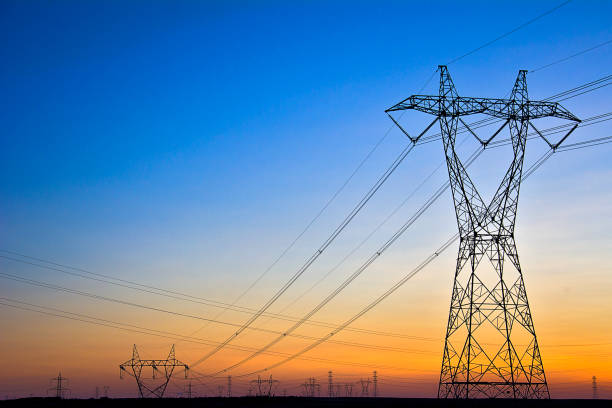The Untapped Potential of Telecom Network Energy Efficiency
In this high-speed, hyper-connected world of ours, telecommunications networks are the digital highways that facilitate every aspect of our lives. From business operations and healthcare services to personal communications and entertainment, these networks play a critical role. However, as we continue to rely more heavily on these systems, their energy consumption has become a significant concern. This article delves into the untapped potential of telecom network energy efficiency, exploring its implications, challenges, and real-world applications.

The Origin of Energy Efficiency in Telecommunications
The concept of energy efficiency in telecommunications is not new. Ever since the advent of the first telegraph systems in the 19th century, scientists and engineers have been striving to improve the efficiency of these systems. However, it was not until the introduction of digital communications in the mid-20th century that the issue of energy consumption truly came to the fore. The transition from analog to digital systems brought about significant improvements in energy efficiency, but it also increased the overall energy demands of the telecom industry.
The Present Scenario: Rising Energy Demands and Green Initiatives
Today, the telecom industry is one of the world’s largest consumers of energy. With the continuous addition of new subscribers, the expansion of network coverage, and the introduction of high-bandwidth services, the energy consumption of telecom networks is expected to keep increasing. In response to this, many telecom companies have started implementing green initiatives, such as renewable energy sources and energy-efficient network designs, aimed at reducing their carbon footprint.
However, while these initiatives are commendable, they only scratch the surface of the potential of telecom network energy efficiency. Many aspects of energy efficiency, such as optimizing network operations, improving equipment design, and leveraging advanced technologies, remain largely untapped.
Implications and Challenges of Telecom Network Energy Efficiency
The benefits of improving telecom network energy efficiency are manifold. For telecom operators, it can lead to significant cost savings and competitive advantages. For consumers, it can translate into more affordable services and better network performance. For the environment, it can reduce CO2 emissions and help mitigate climate change.
However, achieving these benefits is not without challenges. One of the main hurdles is the upfront investment required for energy-efficient upgrades. Other challenges include the lack of standardized metrics for energy efficiency, technical limitations of existing equipment, and the need for industry-wide cooperation and regulation.
Practical Applications of Telecom Network Energy Efficiency
Despite these challenges, there are several promising strategies and technologies for improving telecom network energy efficiency. One approach is to optimize network operations, such as adjusting network capacity according to traffic demand and implementing energy-saving modes during off-peak hours. Another strategy is to improve the design of network equipment, for example, by using more energy-efficient components and materials.
Furthermore, advanced technologies such as artificial intelligence and machine learning can be leveraged to optimize energy consumption in real-time and predict future energy needs. These technologies can also help in identifying inefficiencies and malfunctions in the network, allowing for timely corrective actions.
Looking Ahead: The Future of Telecom Network Energy Efficiency
As the telecom industry continues to evolve, the importance of energy efficiency will only grow. It will be essential for telecom operators to embrace this trend and invest in energy-efficient strategies and technologies. At the same time, there is a need for more research and innovation in this field, to overcome the existing challenges and unlock the full potential of telecom network energy efficiency.
In conclusion, telecom network energy efficiency is a topic of great relevance and untapped potential. It offers a way forward for the telecom industry to meet the growing demand for connectivity in a sustainable and cost-effective manner. It is a topic that deserves more attention and action from all stakeholders in the telecom industry.




